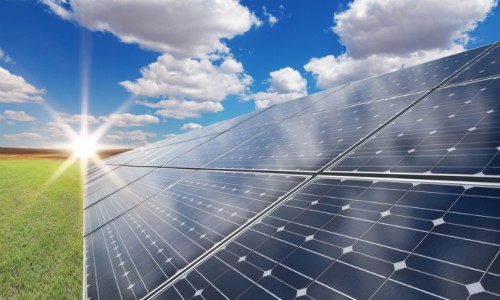
So Distributed Generation, What is it?
Traditionally power has been generated in large plants that take advantage of the fact that large turbines are more efficient at turning the energy from burning whatever fossil fuel into electricity than a smaller turbine. However, because electricity demand is not constant, this centralized system created large inefficiencies. For example, utilities have had to have the production capacity to meet peak-load demand even if that means that most of the time plants are unused. Traditional power plants also suffer from the fact that they concentrate an entire community’s generating capacity into a small area. This makes them more vulnerable to either attack or natural disaster. Lastly, these plants are often far from where the energy is used resulting in transmission and distribution losses.
Distributed generation (DG) is an all encompassing term for any kind of power generation that occurs on a smaller scale, close to where the energy is used. This can mean solar panels installed on rooftops, fuel-cells, some geothermal plants, or micro-turbines just to name a few. The key link between all of these sources is that they are smaller than utility scale generation schemes and thus offer much more flexibility in how they are deployed. They can be small enough to just power a single home or large enough to provide electricity for a whole community.
What Are the Benefits of DG systems?
Reduce Losses and Costs
By being closer to users, DG sources tend to reduce losses caused by power distribution. The International Energy Agency estimates that in the US, transmission and distribution account for 6 percent losses. While this might not seem like a large number, 6 percent of the US electricity generation amounts to 200 million MWh or enough to power around 20 million US homes for a year[1]. Given that customers in the US pay on average 12 cents per kWh these losses amount to around $24 billion in inefficiency.
A good DG system would incorporate multiple sources of power allowing for more efficient production. For example, by combining solar and wind power, a DG system would take advantage of the abundant and therefore cheaper solar power during the day and switch at night when those panels were no longer producing. By including some method of large-scale storage as well, this allows the grid to produce energy even when people don’t need them, and store it for use later on. This would work similarly to a demand response system but instead of reducing usage, an interconnected DG system would constantly be shifting how all the resources were being used.
Less vulnerable to disaster
Distributing power generation means fewer catastrophic power losses in the event of a disaster. The ideal DG system would be able to transfer power from the many generation points to the load sources where it is most needed. Even if parts of that system were to be knocked out due to natural disaster or terrorist attack the rest of the system would be able to adjust to redistribute power and account for those losses. This however requires incredible coordination and integration that currently does not exist in many grids.
Cleaner
For coal to be efficient plants need to be massive to spin large turbines. In PV solar on the other hand, the technology stays the same at whatever scale. This is why solar has been so tied with distributed generation. The inherent flexibility of the technology allows for simple scaling without additional breakthroughs. Wind power is similar. A farmer can have one turbine placed in his field or a power company can plant 500 but the technology is the same.
Also important is the accountability DG creates. One of the biggest reasons that we pollute so much as a society is that we don’t see the direct effects. Separating power generation from where it is used allows for the side effects to not be seen as acutely. Generating power within our communities forces us to be accountable for the consequences as we become keenly aware of the flaws.
However even though there are clean technologies that work well in a distributed system—like wind and solar—this does not mean that all distributed technologies are inherently clean. Diesel generators can be small enough to power individual homes and are clearly not clean sources of energy. So if low-carbon energy is a goal, then other policies must be in place besides just a paradigm shift in generation.
What are the Challenges?
A successful distributed generation system faces a lot of challenges. For one, in many places the generation technologies are simply not market competitive with traditional power plants. While there have been massive improvements from solar, storage, wind, and other clean energy sources they are still far from being competitive across the board. Currently these technologies can play a huge role in niche situations but will require much more investment and development to be widely used. This technological challenge includes the monitoring and distributional problems that such a system would face.
Secondly and probably most importantly this would require a complete overhaul of our grid system. This means not only new technology but also an overhaul of regulatory procedures. Communities wanting to implement distributed systems would need to create systems for all levels of producers to be able to buy and sell energy and establish clear procedures for how that energy is distributed.
Distributed generation systems have traditionally been used to supplement centralized generation in emergencies or in very limited applications. As clean technologies like wind, solar, battery storage, and others mature, it is important that we not take our generation system for granted but rather see it as an opportunity for improvement.
[1] According to the US Energy Information Administration a US home on average uses 10 MWh annually. https://www.eia.gov/tools/faqs/faq.cfm?id=97&t=3